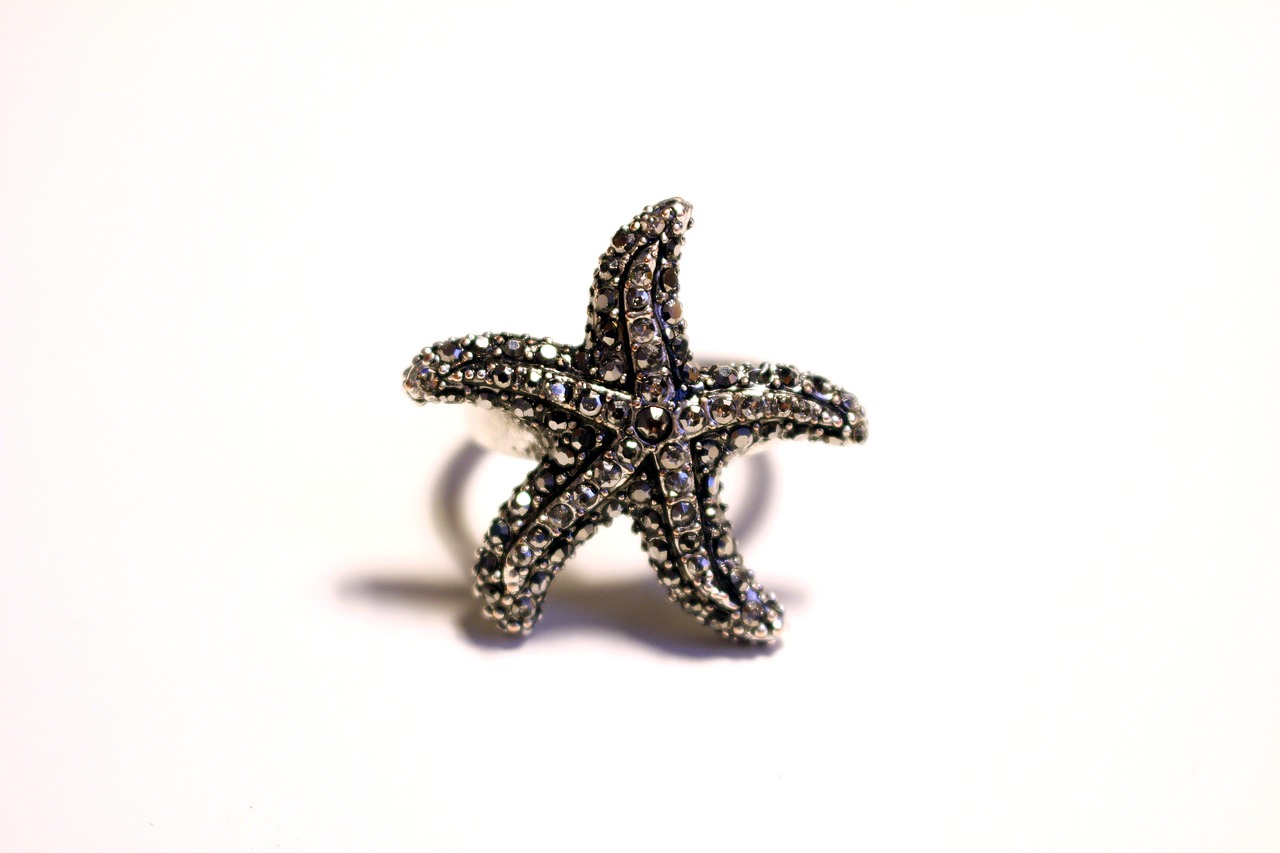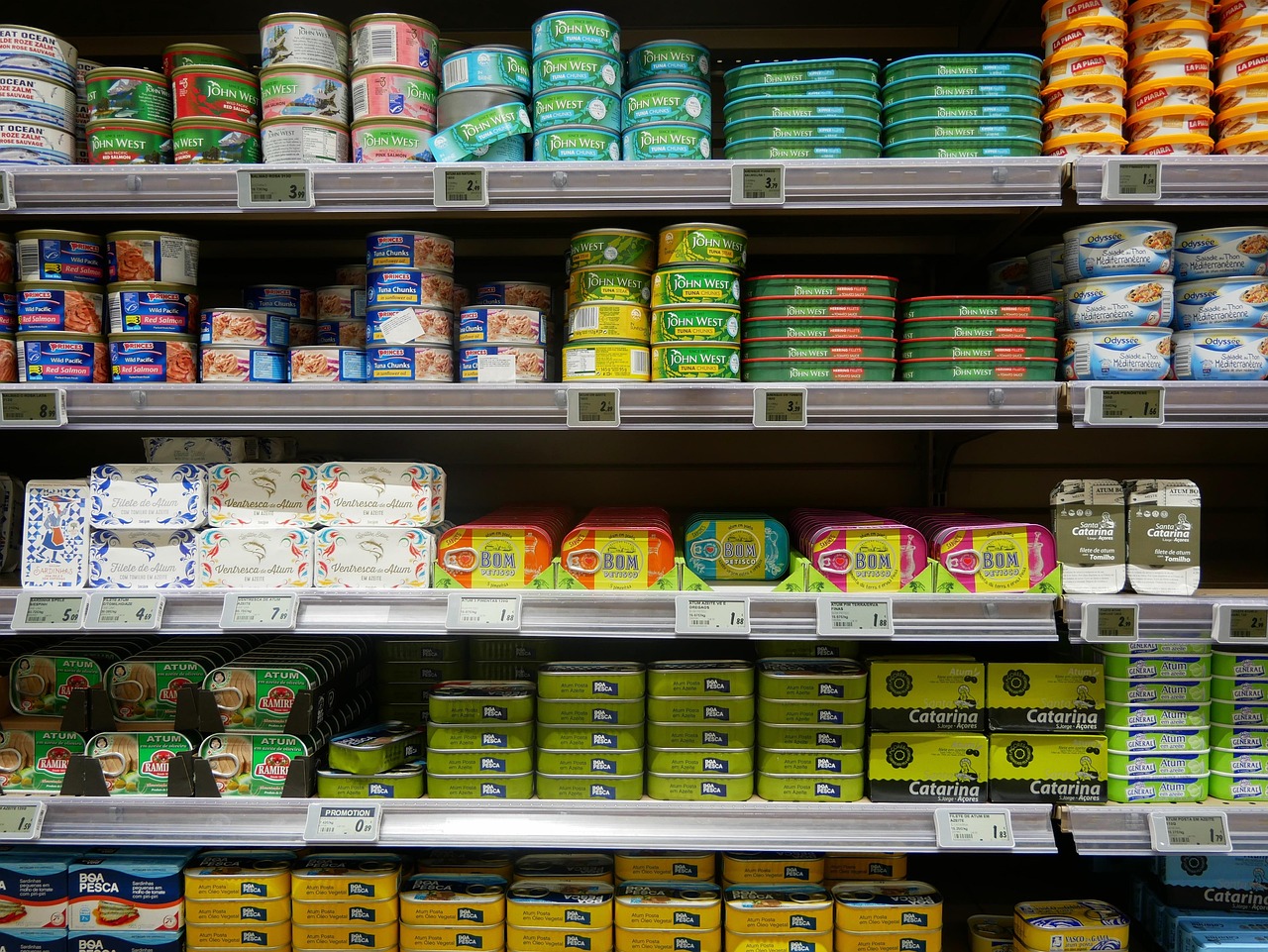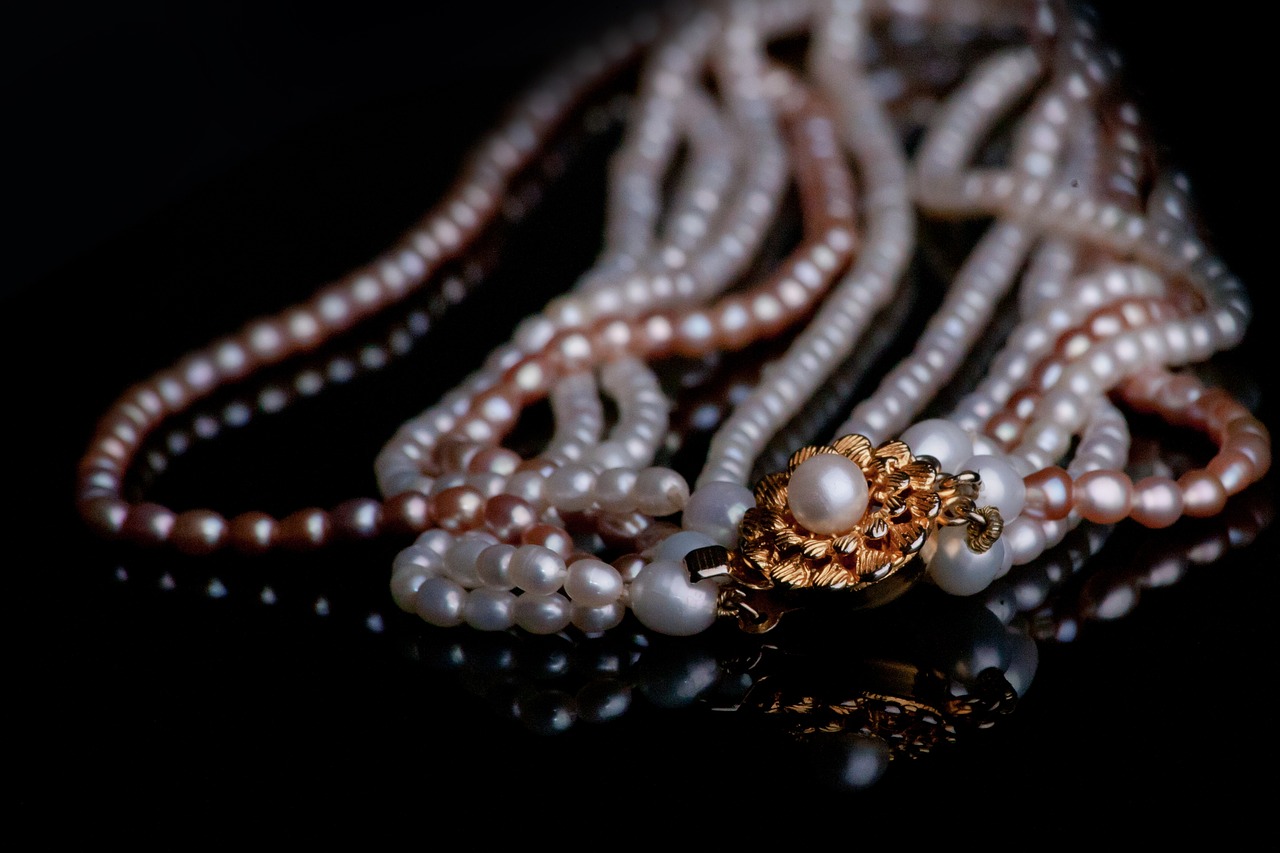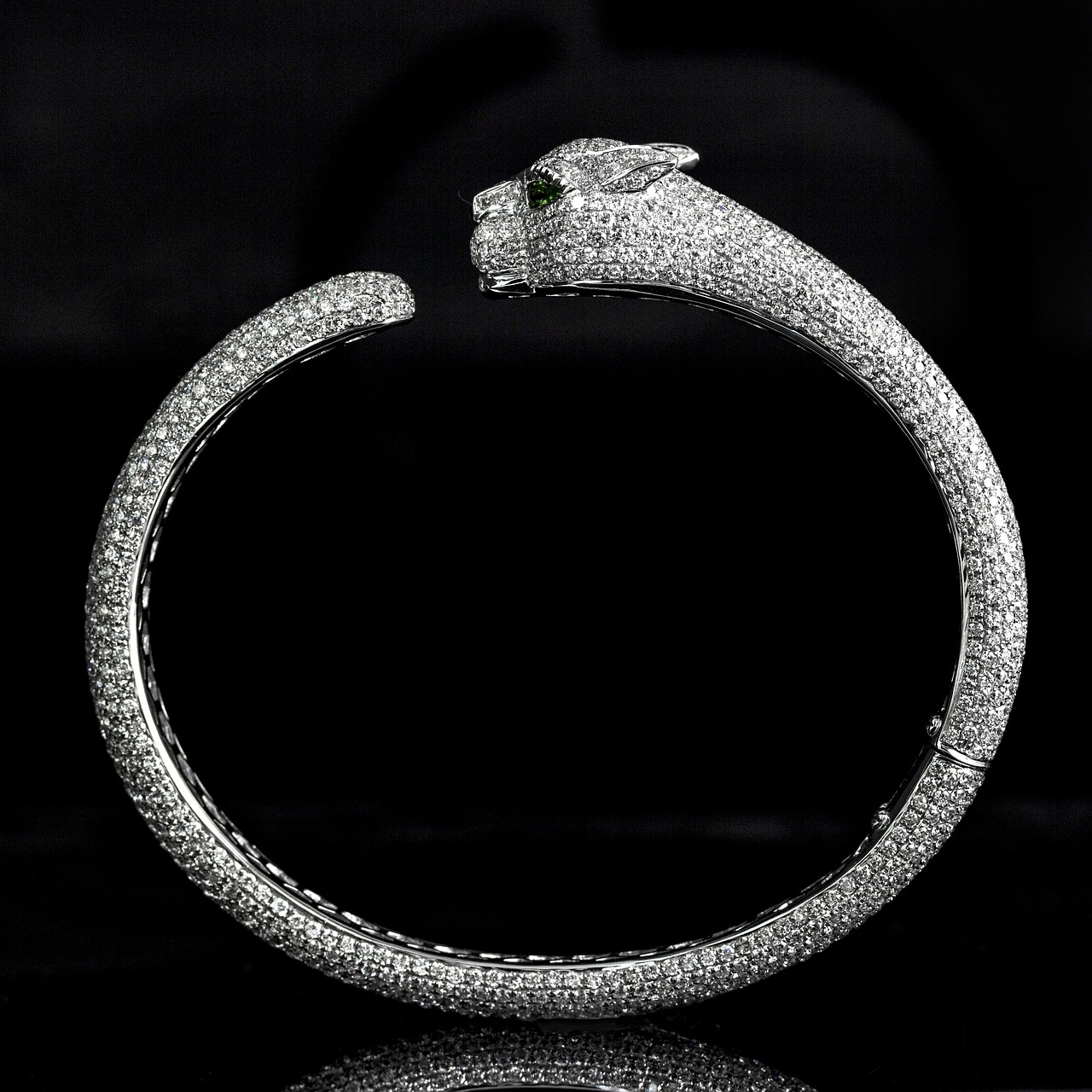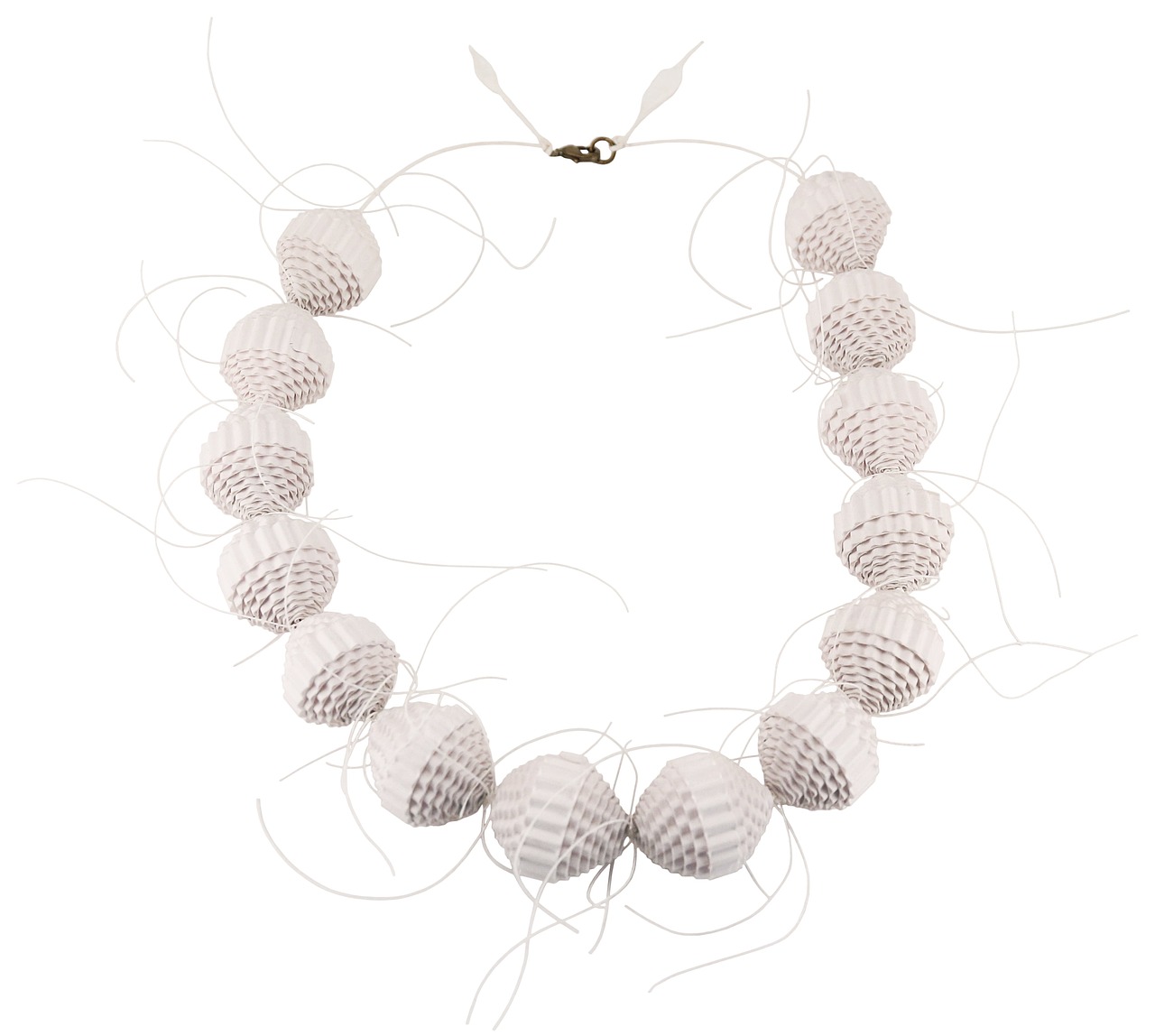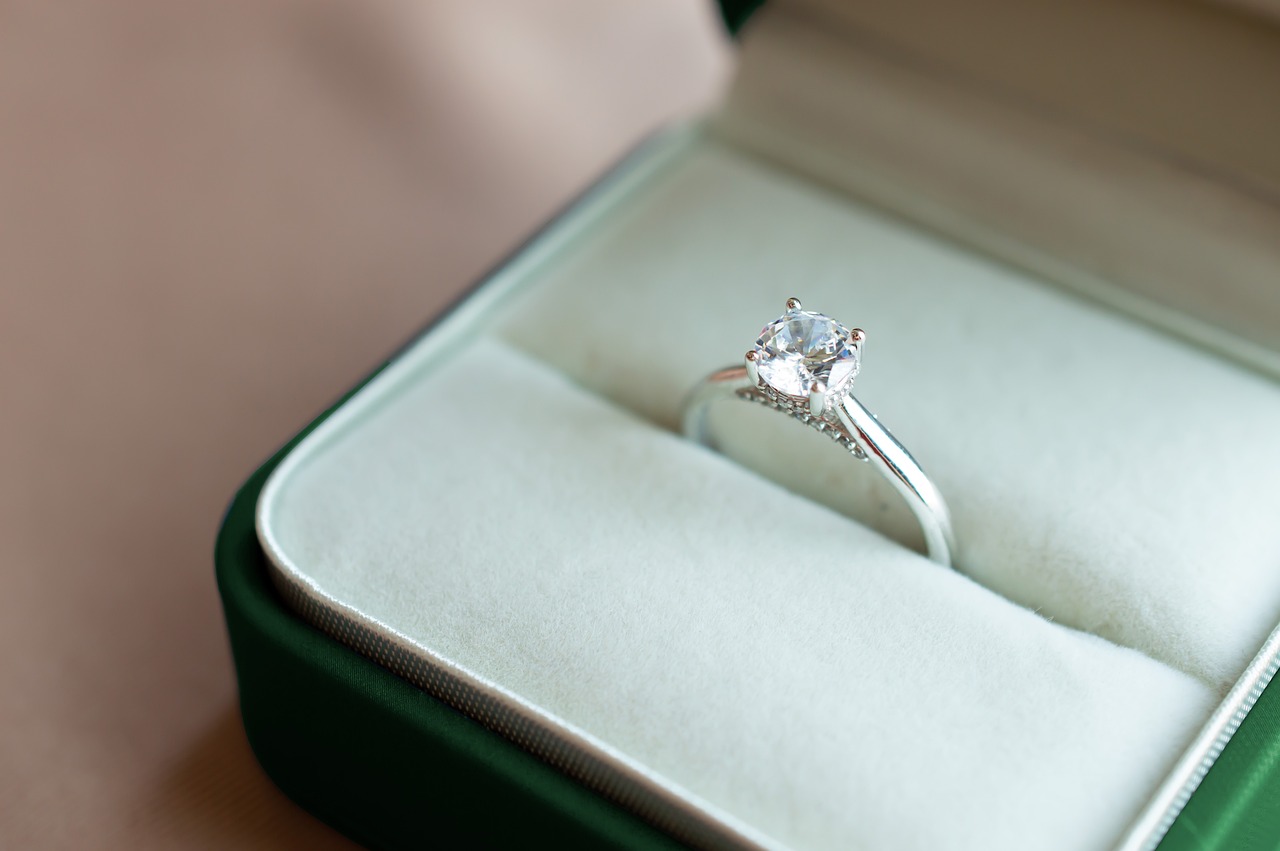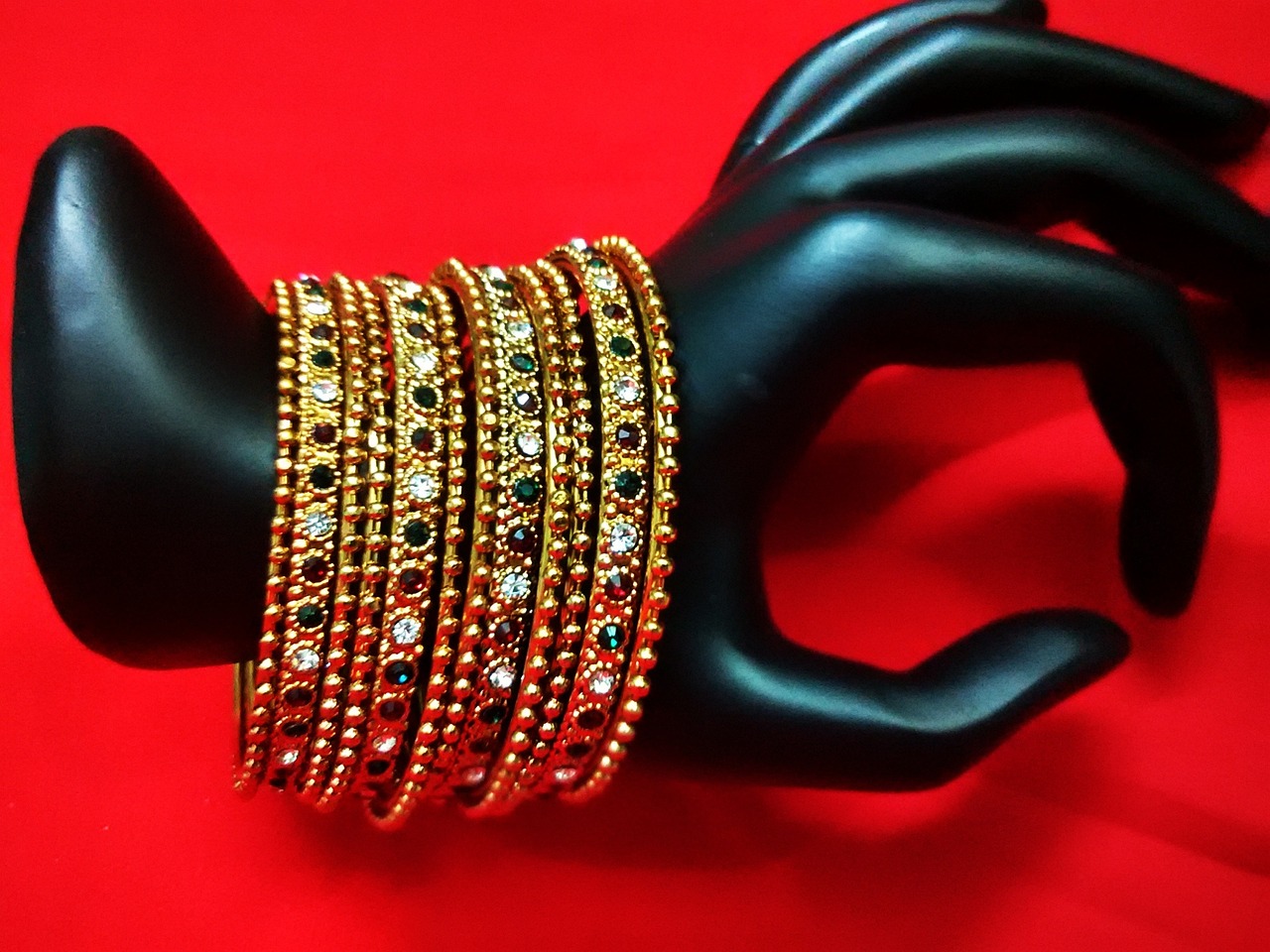This article explores the diverse cultural meanings and historical significance of cuff bracelets, examining their roles in various traditions around the world.
What Are Cuff Bracelets?
Cuff bracelets are wide, open-ended wrist ornaments that have been worn for centuries. Their designs vary significantly across cultures, often symbolizing status, identity, or spirituality. These accessories are not merely fashion items but carry deep cultural narratives.
Historical Origins of Cuff Bracelets
The history of cuff bracelets dates back thousands of years. They have been discovered in ancient civilizations, showcasing their evolution from functional items to symbols of wealth and power. In many cultures, wearing a cuff bracelet was a way to signify one’s role in society.
Ancient Civilizations and Cuff Bracelets
- In Ancient Egypt: Cuff bracelets were often made from precious metals and adorned with gemstones, signifying the wearer’s social status and connection to the divine.
- In Mesopotamia: These adornments featured intricate designs, reflecting the artistry of the time and the importance of trade in acquiring materials.
The Role of Cuff Bracelets in Egyptian Culture
In Egyptian culture, cuff bracelets were not just decorative; they served as talismans believed to offer protection and blessings to the wearer. The use of symbols and motifs in these bracelets often had spiritual significance.
Cuff Bracelets in Mesopotamian Society
Mesopotamian cuff bracelets often featured elaborate designs, which reflected the artistic achievements of the society and the significance of trade routes in obtaining various materials.
Cuff Bracelets in Indigenous Cultures
Indigenous cultures across the globe have their unique interpretations of cuff bracelets. They often incorporate natural materials and traditional craftsmanship that reflect their heritage and connection to the earth.
Modern Interpretations of Cuff Bracelets
Today, cuff bracelets are not only fashion statements but also carry personal significance for many individuals. They can represent personal milestones or beliefs, making them unique to each wearer.
Fashion Trends and Cuff Bracelets
Cuff bracelets have become a staple in contemporary fashion, often worn stacked or mixed with other jewelry to create a personalized style statement. This trend allows individuals to express their creativity and personal style.
Symbolism in Modern Cuff Bracelets
Many modern cuff bracelets incorporate symbols or engravings that hold personal meaning for the wearer, such as initials, quotes, or significant dates. This personalization adds emotional value to the piece.
The Cultural Significance of Cuff Bracelets
Cuff bracelets often embody cultural narratives, serving as a bridge between tradition and modernity. They can symbolize heritage, identity, and personal expression, making them significant in various contexts.
Religious and Spiritual Symbolism
In various cultures, cuff bracelets are used in spiritual practices, representing faith, protection, or a connection to a higher power. This spiritual dimension adds depth to their significance.
Celebration of Milestones
Cuff bracelets are frequently gifted during significant life events such as graduations, weddings, or anniversaries, marking these moments with a lasting symbol of love and commitment.
How to Choose the Right Cuff Bracelet
Selecting the perfect cuff bracelet involves considering factors like material, size, and style, ensuring that it aligns with the wearer’s personal taste and intended message.
Materials and Their Meanings
Different materials used in cuff bracelets can convey various meanings, from the strength of metal to the tranquility of natural stones, influencing the wearer’s connection to the piece.
Finding the Perfect Fit
The right cuff bracelet should fit comfortably on the wrist without being too loose or tight, allowing for both style and comfort in everyday wear.
Care and Maintenance of Cuff Bracelets
To preserve the beauty and integrity of cuff bracelets, proper care and maintenance are essential, ensuring they remain cherished pieces for years to come.
Cleaning Techniques for Cuff Bracelets
Regular cleaning of cuff bracelets helps maintain their shine and luster, with specific techniques varying based on the materials used.
Storage Tips for Longevity
Proper storage is crucial to prevent scratches and damage, with recommendations for keeping cuff bracelets in a safe and organized manner.
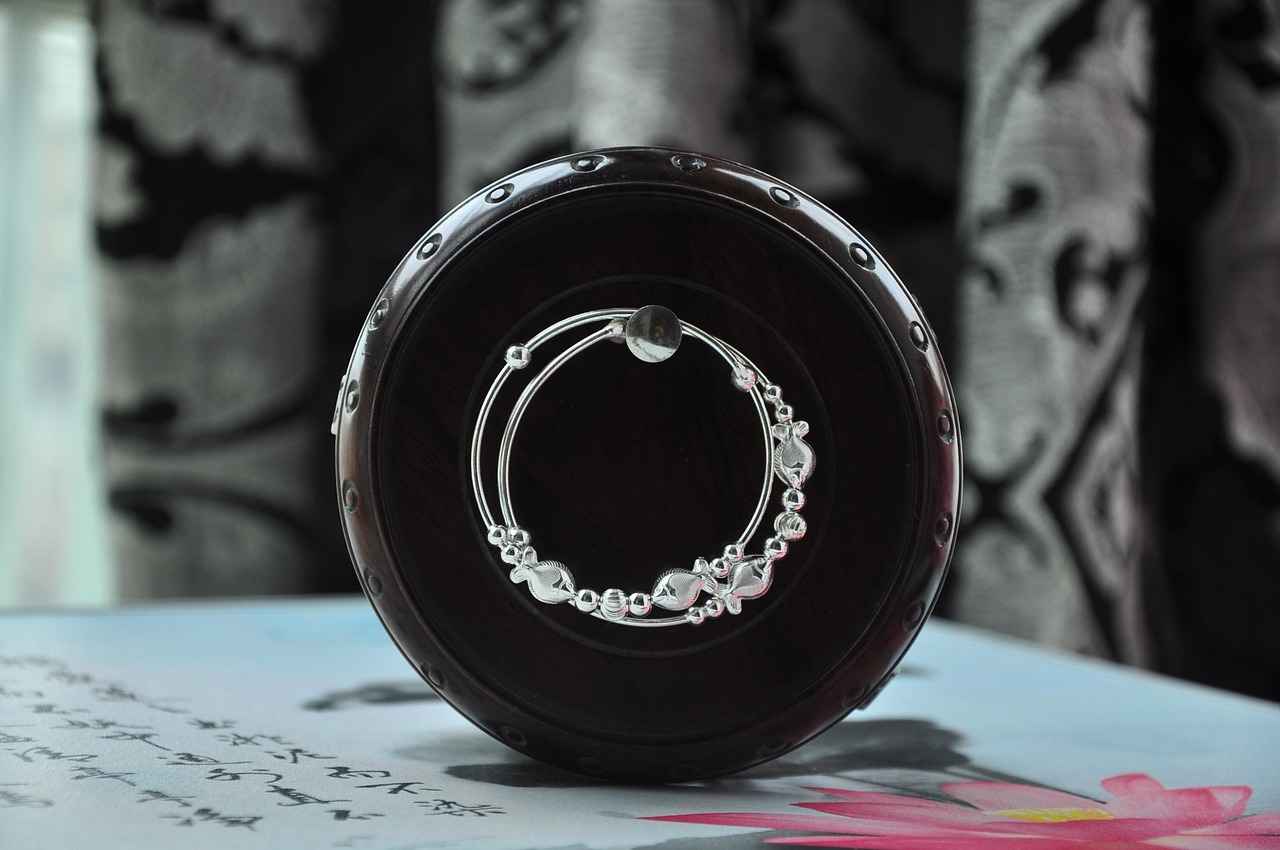
What Are Cuff Bracelets?
Cuff bracelets are distinctive wrist ornaments characterized by their wide, open-ended design. These unique pieces of jewelry have transcended time and culture, serving various purposes throughout history. Their significance often extends beyond mere aesthetics, embodying cultural identity, spiritual beliefs, and personal expression.
Cuff bracelets are typically crafted from a variety of materials, including metals, leather, and even natural elements like wood or stone. Their design can range from simple and understated to intricate and embellished, reflecting the diversity of artistic expression across different cultures. Unlike traditional bangles, which are circular and closed, cuff bracelets feature an open design that allows for easy wear and adjustment.
The cultural significance of cuff bracelets can vary widely. In some cultures, they are worn as symbols of status or wealth, while in others, they may signify spirituality or identity. For instance, in many indigenous communities, cuff bracelets made from natural materials often carry deep cultural meanings, representing a connection to the earth and ancestral traditions.
The history of cuff bracelets can be traced back to ancient civilizations. Archaeological findings suggest that these ornaments were prevalent in ancient Egypt, Mesopotamia, and other early cultures. In these societies, cuff bracelets were often made from precious metals and adorned with gemstones, serving as indicators of the wearer’s social standing and divine favor.
In contemporary society, cuff bracelets have evolved into a fashion staple. They are often worn in layers or combined with other jewelry to create a personalized style. Many modern cuff bracelets feature engravings or symbols that resonate with the wearer’s personal beliefs or milestones, making them not just a fashion accessory but also a statement of individuality.
Selecting the ideal cuff bracelet involves considering various factors, including material, size, and style. The material can influence not only the look of the bracelet but also its meaning. For example, silver might symbolize clarity and purity, while leather can evoke a sense of ruggedness and earthiness.
To maintain the beauty of your cuff bracelet, proper care is essential. Regular cleaning with a soft cloth can help preserve its shine, while storing it in a protective case can prevent scratches. Depending on the material, specific cleaning techniques may vary, so it’s important to follow guidelines suitable for the bracelet’s composition.
In summary, cuff bracelets are more than just decorative accessories; they carry rich histories and cultural significance. Whether worn for fashion, tradition, or personal meaning, these pieces remain a powerful form of self-expression across the globe.
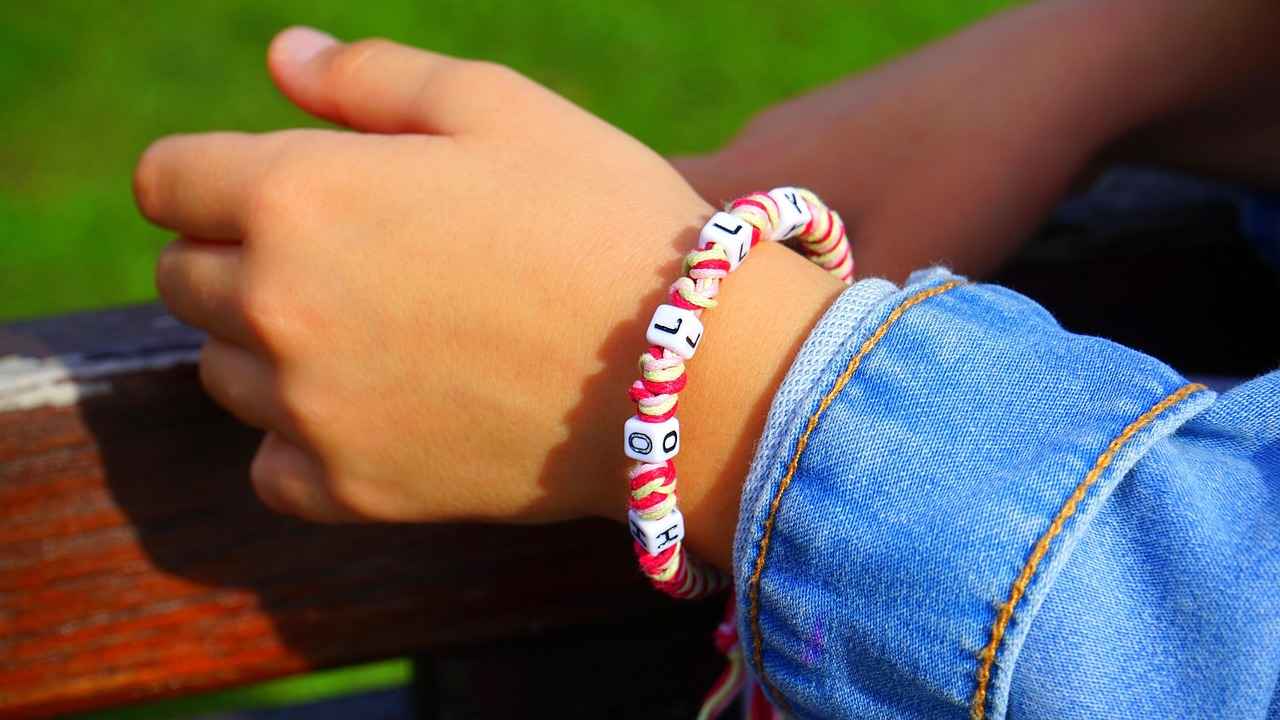
Historical Origins of Cuff Bracelets
The reveal a fascinating journey through time, showcasing their transformation from simple functional items into intricate symbols of wealth, power, and cultural identity. These unique adornments have been traced back to various ancient civilizations, each contributing to their rich tapestry of meaning and significance.
Cuff bracelets have been discovered in archaeological sites dating back to 3000 BC, primarily in regions such as Egypt and Mesopotamia. These early examples were often crafted from materials like gold, silver, and bronze, indicating the wearer’s social status. In Egypt, cuff bracelets were not merely decorative; they were believed to carry magical properties that provided protection and blessings.
Ancient artisans utilized a variety of materials to create cuff bracelets, including:
- Metals: Gold and silver were favored for their beauty and durability.
- Gemstones: Precious stones like lapis lazuli and turquoise were often embedded, symbolizing divine favor.
- Natural Elements: In some cultures, materials such as wood and bone were used, reflecting a connection to nature.
As societies progressed, so did the design and function of cuff bracelets. In ancient Rome, for instance, these ornaments became a sign of military achievement, often worn by soldiers as a badge of honor. The intricate designs mirrored the artistic styles of the time, showcasing the craftsmanship and cultural values of the society.
In many ancient cultures, cuff bracelets were imbued with spiritual significance. They were often worn during religious ceremonies or as offerings to deities. For example, in Hinduism, cuff bracelets known as kadas symbolize strength and protection, often given as gifts during significant life events.
Indigenous cultures around the world also have their interpretations of cuff bracelets. In Native American traditions, these pieces often feature symbols that represent tribal identity and heritage. Crafted from materials like leather and beads, they reflect the spiritual connection to the earth and ancestors.
In contemporary society, cuff bracelets have transcended their traditional roles and become a fashion staple. They are often personalized with engravings or charms that convey personal meanings, such as milestones or beliefs. This shift highlights the evolving nature of cuff bracelets, now serving as both artistic expressions and personal statements.
Today, cuff bracelets are celebrated not only for their aesthetic appeal but also for their rich history and cultural significance. They serve as a reminder of the past while allowing individuals to express their unique identities. Whether worn as a fashion accessory or a meaningful heirloom, cuff bracelets continue to resonate with people across the globe.
In conclusion, the historical origins of cuff bracelets reveal a fascinating interplay of culture, art, and personal expression. From their ancient beginnings to their modern interpretations, these pieces of jewelry continue to hold significant value in various traditions worldwide.
Ancient Civilizations and Cuff Bracelets
Cuff bracelets have a rich history that dates back to ancient civilizations, particularly in Egypt and Mesopotamia. These ornate pieces of jewelry were not merely decorative; they held profound significance in the societies that crafted them.
In ancient Egypt and Mesopotamia, cuff bracelets were typically crafted from precious metals such as gold and silver. These materials were chosen not only for their beauty but also for their association with wealth and power. The use of gemstones like lapis lazuli, turquoise, and carnelian was common, enhancing the visual appeal of the bracelets while also symbolizing the wearer’s connection to the divine.
The significance of cuff bracelets extended beyond mere fashion. They were seen as a reflection of the wearer’s social status and were often worn by the elite. In many cases, these bracelets served as a form of spiritual protection, believed to ward off evil spirits and bring blessings from the gods.
In both Egyptian and Mesopotamian societies, the design and materials of cuff bracelets varied significantly based on the wearer’s rank. For instance, high-ranking officials and royalty often wore intricately designed cuffs adorned with precious stones, while commoners might have simpler versions made from less expensive materials. This differentiation highlighted the social hierarchies present in these ancient cultures.
The artistry involved in creating cuff bracelets was a testament to the skill of ancient artisans. In Mesopotamia, for example, the intricate designs often depicted mythological scenes or symbols that held cultural significance. These designs were not only aesthetically pleasing but also conveyed messages about the wearer’s identity and beliefs.
In ancient Egypt, cuff bracelets were often associated with religious rituals. They were believed to carry the blessings of the gods and were frequently included in burial goods, ensuring that the deceased would have protection in the afterlife. This practice underscores the spiritual significance of cuff bracelets, linking them to both life and death.
The enduring legacy of cuff bracelets from ancient Egypt and Mesopotamia offers valuable insights into the values and beliefs of these civilizations. They serve as a reminder of the importance of identity, status, and spirituality in human culture. As we continue to wear and appreciate cuff bracelets today, we connect with a rich history that transcends time and geography.
Today, cuff bracelets continue to be popular fashion accessories, often inspired by ancient designs. Many contemporary jewelers incorporate elements reminiscent of these ancient styles, blending history with modern aesthetics. This fusion not only honors the craftsmanship of the past but also allows individuals to express their own personal narratives through jewelry.
The Role of Cuff Bracelets in Egyptian Culture
Cuff bracelets have long held a significant place in Egyptian culture, transcending their role as mere accessories. These stunning pieces of jewelry were intricately crafted and served various purposes, making them essential elements of both daily life and spiritual practice.
In ancient Egypt, cuff bracelets were more than just decorative items; they were believed to possess magical properties. Crafted from materials such as gold, silver, and precious stones, they were often seen as talismans that provided protection and blessings to the wearer. The Egyptians believed that these bracelets could ward off evil spirits and attract good fortune, making them highly sought after.
The designs of cuff bracelets were rich in symbolism. Many featured motifs associated with deities, such as the Eye of Horus, which symbolized protection, and the ankh, representing life. These symbols were not merely decorative; they were thought to imbue the wearer with divine favor and strength. The choice of materials also played a crucial role; for instance, gold was associated with the gods and eternal life, while lapis lazuli was believed to promote wisdom.
Cuff bracelets were worn by individuals across various social strata, from pharaohs and nobility to everyday citizens. However, the quality and design of the bracelet often indicated the wearer’s status. The elite adorned themselves with lavish, intricately designed pieces, while simpler versions were worn by the general populace. This distinction not only showcased wealth but also reinforced social hierarchies within Egyptian society.
The craftsmanship of cuff bracelets in ancient Egypt was exceptional. Artisans employed techniques such as casting, engraving, and inlaying to create stunning designs. The process was labor-intensive and required great skill, reflecting the high value placed on these artifacts. Each bracelet was often personalized, with engravings that might include the wearer’s name or a special inscription, further enhancing its significance.
Cuff bracelets also played a vital role in Egyptian funerary practices. They were often included in burial goods, as it was believed that they would accompany the deceased into the afterlife, providing protection and blessings in the next world. The inclusion of these bracelets in tombs underscores their importance beyond mere ornamentation; they were integral to the spiritual journey of the individual.
Today, cuff bracelets inspired by ancient Egyptian designs continue to captivate people around the world. Modern interpretations often incorporate contemporary materials and styles while retaining the rich symbolism that characterized their ancient predecessors. Many wear these bracelets not only for their aesthetic appeal but also for the cultural heritage they represent.
In conclusion, the role of cuff bracelets in Egyptian culture extends far beyond their decorative function. They were powerful symbols of protection, status, and spirituality, intricately woven into the fabric of ancient Egyptian life. Their legacy continues to influence modern jewelry design, reminding us of the rich history and cultural significance that these beautiful pieces embody.
Cuff Bracelets in Mesopotamian Society
have always held a significant place in the cultural and artistic landscape of ancient civilizations. These wide, open-ended wrist ornaments were not merely decorative; they were imbued with deep meanings and showcased the skill of artisans of the era.
Mesopotamian cuff bracelets were often crafted from a variety of materials, including gold, silver, and copper. The choice of material was not only a reflection of the wearer’s wealth but also indicated their social status within the community. The intricate designs featured on these bracelets often included geometric patterns, animal motifs, and mythological symbols, each telling a story that connected the wearer to their cultural heritage.
- Artistry and Craftsmanship: The artistry involved in creating these cuff bracelets was remarkable. Skilled craftsmen would spend countless hours meticulously designing and forging each piece, ensuring that it was not only beautiful but also a testament to their technical abilities.
- Trade and Material Acquisition: The importance of trade in Mesopotamian society cannot be overstated. The acquisition of materials for cuff bracelets was often facilitated through extensive trade networks. This not only brought in precious metals and stones but also allowed for the exchange of artistic ideas and techniques across different cultures.
Furthermore, the symbolism behind these cuff bracelets extended beyond mere aesthetics. They were often worn during significant life events, such as weddings or religious ceremonies, serving as a connection to the divine. In this way, cuff bracelets acted as talismans, believed to provide protection and blessings to the wearer.
In addition to their spiritual significance, these bracelets also played a role in the social dynamics of Mesopotamian society. Wearing an intricately designed cuff bracelet could signify one’s rank or position within a community, making them a powerful tool for expressing identity.
As we delve deeper into the significance of cuff bracelets in Mesopotamian culture, it becomes evident that their impact was far-reaching. They were not merely accessories but rather essential components of personal and social identity. The artistry involved in their creation and the meanings behind their designs reflect a rich cultural tapestry that continues to inspire modern jewelry makers today.
In summary, cuff bracelets in Mesopotamian society were much more than ornamental pieces. They represented a blend of artistry, trade, social status, and spiritual beliefs. The intricate designs and materials used in their creation highlight the sophistication of ancient Mesopotamian culture and its lasting influence on the world of jewelry.
Cuff Bracelets in Indigenous Cultures
Cuff bracelets hold significant meaning in many indigenous cultures around the world. These unique ornaments are not merely decorative items; they are rich in cultural heritage and often tell stories of identity, spirituality, and tradition. This section delves into how different indigenous communities interpret and craft cuff bracelets, highlighting the importance of natural materials and traditional techniques.
Indigenous cuff bracelets are characterized by their use of natural materials such as wood, bone, shells, and stones. These materials are often sourced locally, embodying the connection between the wearer and their environment. The craftsmanship involved in creating these bracelets is typically passed down through generations, ensuring that each piece reflects the heritage and values of the culture it represents.
In many indigenous cultures, cuff bracelets are imbued with spiritual significance. They are often believed to carry protective properties or to symbolize a connection to the ancestors. For instance, among certain Native American tribes, cuff bracelets may feature specific symbols or patterns that represent tribal identity or important life lessons. These symbols serve as a reminder of the wearer’s roots and their place within the community.
The craftsmanship behind indigenous cuff bracelets is a vital aspect of their cultural significance. Artisans often employ traditional techniques such as weaving, carving, and engraving. Each technique is a reflection of the community’s history and artistic expression. For example, the intricate beadwork found in some African tribal bracelets tells stories of family lineage and social status, showcasing the skill and creativity of the artisans.
While many indigenous cultures continue to uphold traditional practices, there has been a growing trend of modern adaptations of cuff bracelets. Contemporary artisans are blending traditional designs with modern aesthetics, making them appealing to a broader audience. This fusion not only helps in preserving cultural heritage but also allows indigenous artisans to thrive in the global marketplace.
When selecting an indigenous cuff bracelet, it’s important to consider its cultural significance and the story behind it. Here are some factors to keep in mind:
- Material: Choose materials that resonate with you personally and reflect the culture’s values.
- Design: Look for designs that tell a story or have specific meanings within the culture.
- Craftsmanship: Consider supporting artisans who use traditional techniques, ensuring that your purchase contributes to cultural preservation.
For many indigenous peoples, cuff bracelets are more than just accessories; they are a vital part of their cultural identity. Wearing these bracelets can serve as a powerful statement of pride and belonging. They often become heirlooms, passed down through generations, symbolizing the continuity of traditions and the resilience of the community.
In summary, cuff bracelets in indigenous cultures are rich in meaning and craftsmanship. They serve as a bridge between the past and the present, embodying the values and traditions of the communities that create them. By understanding their significance, we can appreciate not only the artistry involved but also the stories that each piece tells.
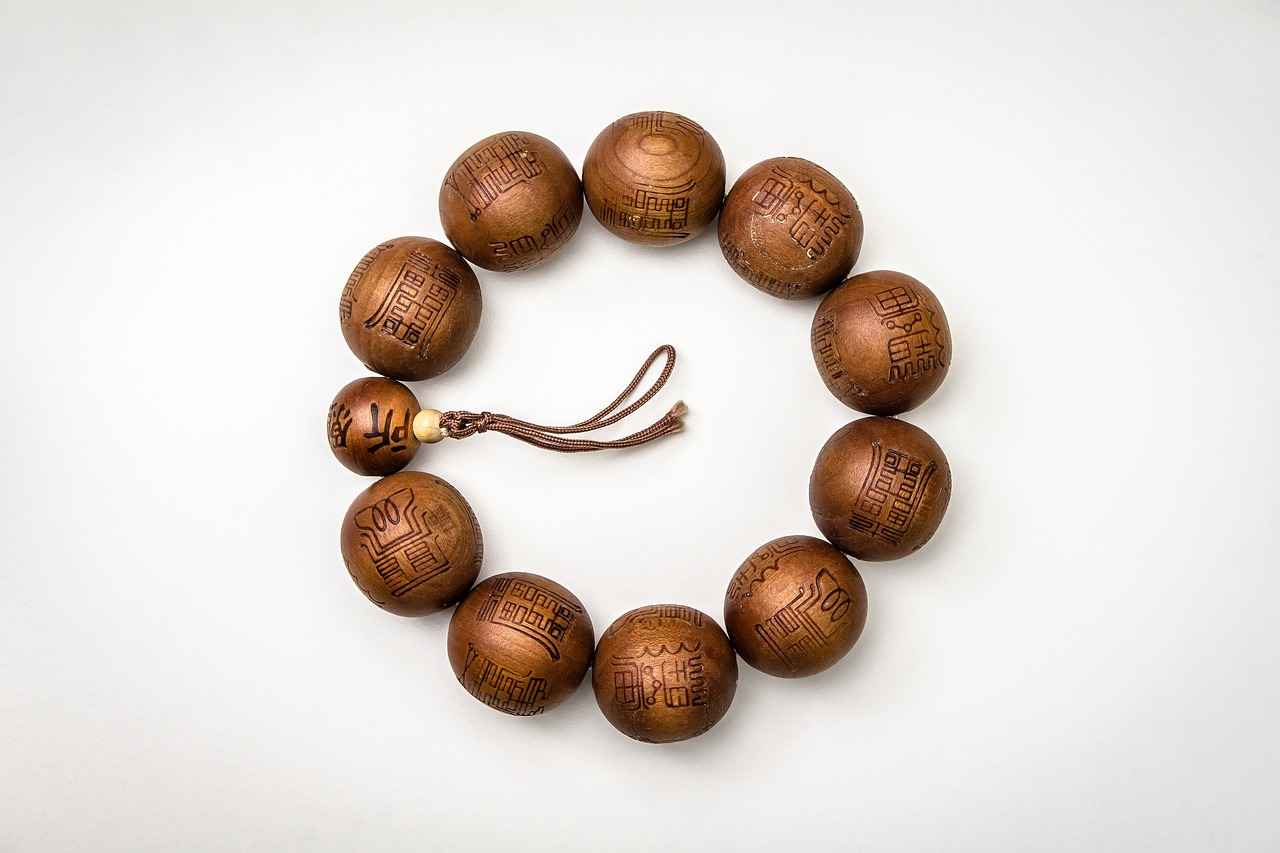
Modern Interpretations of Cuff Bracelets
The world of jewelry has evolved significantly over the years, with cuff bracelets emerging as a prominent accessory in both fashion and personal expression. As we delve into the modern interpretations of cuff bracelets, it becomes evident that these pieces are more than just stylish adornments; they carry deep personal significance for many individuals.
Today, cuff bracelets are not only fashion statements but also serve as symbols of personal milestones and beliefs. For many, these bracelets encapsulate important life events, such as graduations, weddings, or personal achievements. This transformation from mere jewelry to meaningful artifacts is a testament to their evolving role in our lives.
In the realm of contemporary fashion, cuff bracelets have become a staple accessory. They are often worn in layers, stacked with other bracelets, or combined with watches to create a unique personal style. The versatility of cuff bracelets allows for endless combinations, enabling individuals to express their personality and creativity.
Modern cuff bracelets frequently feature symbols or engravings that hold personal meaning for the wearer. These can include initials, significant quotes, or dates that mark important milestones in one’s life. The incorporation of such elements not only enhances the aesthetic appeal of the bracelet but also deepens its emotional significance.
Selecting the perfect cuff bracelet involves careful consideration of various factors. Here are some tips:
- Material: Different materials, from metals to natural stones, can convey various meanings and styles.
- Size: Ensure that the cuff fits comfortably on your wrist to allow for everyday wear.
- Style: Choose a design that resonates with your personal taste and reflects your identity.
Cuff bracelets also embody rich cultural narratives. They serve as a bridge between tradition and modernity, symbolizing heritage and identity. In various cultures, these bracelets are used in spiritual practices, representing faith and a connection to a higher power.
Furthermore, cuff bracelets are often gifted during significant life events, marking these moments with a lasting symbol of love and commitment. Whether it’s a graduation gift from a parent or a wedding present, these bracelets carry emotional weight and serve as reminders of cherished memories.
To ensure that your cuff bracelet remains a treasured piece for years to come, proper care and maintenance are essential. Regular cleaning can help maintain its shine, and storing it in a safe place can prevent scratches and damage. Consider using a soft cloth to wipe down the bracelet after wearing it, and store it in a jewelry box to keep it protected.
In conclusion, cuff bracelets have transcended their role as mere fashion accessories. They are now imbued with personal significance and cultural narratives, making them cherished pieces in many individuals’ lives. Whether worn for style or sentiment, these bracelets continue to evolve, reflecting the diverse stories and identities of those who wear them.
Fashion Trends and Cuff Bracelets
Cuff bracelets have evolved into a prominent fashion accessory, capturing the attention of style enthusiasts and casual wearers alike. Their versatility allows them to be worn in various ways, making them a favorite in contemporary wardrobes. This article delves into the fashion trends surrounding cuff bracelets, exploring how they are styled, their significance in modern fashion, and tips on how to wear them effectively.
The rise in popularity of cuff bracelets can be attributed to their unique designs and the ability to express personal style. Unlike traditional bangles, cuff bracelets are often wider and can feature intricate patterns, gemstones, or engravings. This variety allows wearers to choose pieces that resonate with their individual tastes and sentiments.
- Stacking: One of the hottest trends is stacking cuff bracelets with other wrist accessories. Mixing different materials, such as leather, metal, and beads, creates a personalized look that can be tailored to any outfit.
- Mixing Textures: Pairing a sleek metal cuff with a chunky wooden bracelet can add depth and interest to your ensemble. This contrast in textures enhances the overall aesthetic.
- Layering with Watches: Cuff bracelets can be layered with watches for a chic, modern look. Opt for a minimalist watch paired with a bold cuff for a balanced appearance.
Current trends in cuff bracelet designs reflect a blend of minimalism and bold statements. Many designers are focusing on:
- Sustainable Materials: Eco-friendly materials are gaining traction, with brands creating stunning cuffs from recycled metals and ethically sourced stones.
- Personalization: Customizable cuffs that allow wearers to engrave initials, quotes, or significant dates are increasingly sought after, adding a personal touch to the accessory.
- Bold Colors: Vibrant colors and unique patterns are making a comeback, allowing wearers to express their personality through eye-catching pieces.
Absolutely! Cuff bracelets can elevate any outfit, making them suitable for both casual and formal settings. For weddings, a delicate cuff adorned with pearls or crystals can complement a bridal gown beautifully. On the other hand, a chunky, statement cuff can add flair to an evening outfit, drawing attention and sparking conversation.
When selecting a cuff bracelet, consider the following:
- Size and Fit: Ensure that the cuff fits comfortably on your wrist. A well-fitted cuff should not slide off easily but should also not be too tight.
- Material: Choose a material that aligns with your lifestyle and skin sensitivity. For example, stainless steel is durable and hypoallergenic, while leather offers a more casual vibe.
- Style: Think about the occasions you plan to wear the cuff. Opt for classic designs for versatile wear, or choose bold styles for specific events.
The enduring appeal of cuff bracelets lies in their ability to transcend trends. They are not just a fleeting fashion statement but an accessory that can be cherished for years. As styles evolve, cuff bracelets remain relevant, adapting to new trends while retaining their core essence of personal expression.
In conclusion, cuff bracelets are more than just fashionable items; they are a reflection of personal style and a testament to the wearer’s individuality. With their versatility and timeless charm, they will continue to be a staple in the world of fashion.
Symbolism in Modern Cuff Bracelets
In today’s world, cuff bracelets have transcended their traditional roles, evolving into powerful symbols of personal expression. Many modern cuff bracelets are designed with unique symbols, engravings, or motifs that resonate deeply with the wearer. These personalized elements can include initials, meaningful quotes, or significant dates, making each piece a reflection of individual stories and experiences.
What Do Personal Symbols Represent?
The incorporation of personal symbols in cuff bracelets serves various purposes. For many, these symbols are a reminder of cherished memories or milestones. For instance, a bracelet engraved with a wedding date may symbolize love and commitment, while initials can represent family ties or friendships that hold significant value. The choice of symbols is often deeply personal, reflecting the wearer’s journey and identity.
How Do Quotes Enhance Meaning?
Quotes engraved on cuff bracelets can serve as daily affirmations or reminders of core beliefs. Many individuals choose phrases that inspire them or encapsulate their life philosophy. This practice not only personalizes the bracelet but also transforms it into a source of motivation. For example, a quote like “Live Laugh Love” can remind the wearer to embrace positivity in their daily life.
The Importance of Significant Dates
Significant dates, such as birthdays, anniversaries, or the day of a personal achievement, are often engraved on cuff bracelets. This practice allows wearers to carry a piece of their history with them, celebrating important moments in a tangible way. Each glance at the bracelet can evoke memories and emotions tied to those special dates, reinforcing their significance in the wearer’s life.
How Do Cultural Influences Shape Modern Designs?
Modern cuff bracelets are also influenced by cultural symbols and motifs. Many artisans draw inspiration from their heritage, incorporating traditional designs that resonate with their cultural identity. This fusion of contemporary style with cultural elements creates a unique narrative for each bracelet, allowing wearers to connect with their roots while expressing their individuality.
Are Cuff Bracelets a Form of Self-Expression?
Absolutely! Cuff bracelets have become a popular medium for self-expression. They allow individuals to communicate their values, beliefs, and personal stories without saying a word. Whether it’s through the choice of materials, colors, or engravings, each bracelet tells a story that is uniquely its own.
How to Choose Symbols That Resonate?
- Reflect on Personal Values: Consider what matters most in your life.
- Think About Your Journey: Choose symbols that represent significant experiences.
- Incorporate Cultural Elements: If applicable, include symbols that connect you to your heritage.
In conclusion, modern cuff bracelets are more than just fashion accessories; they are powerful symbols of personal identity and expression. By incorporating meaningful symbols, quotes, and dates, wearers can create a unique piece that reflects their journey and values. As these bracelets continue to evolve, they remain a timeless way to celebrate individuality and connection.
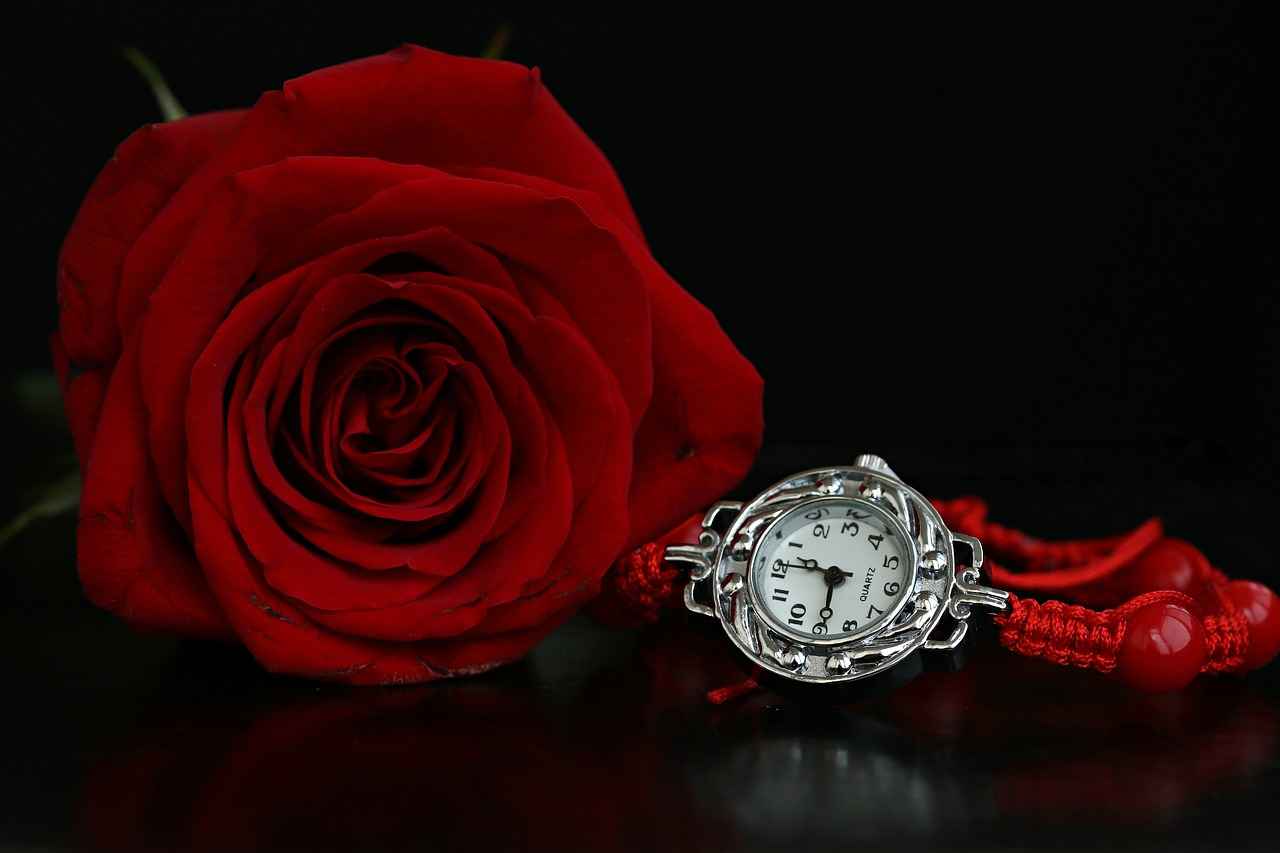
The Cultural Significance of Cuff Bracelets
Cuff bracelets are more than mere fashion accessories; they are profound symbols of cultural heritage and personal identity. Throughout history, these wide, open-ended wrist ornaments have served as a bridge between tradition and modernity, embodying the narratives of various cultures and individuals. This article delves into the cultural significance of cuff bracelets, exploring their roles in different traditions and how they continue to resonate in contemporary society.
Cuff bracelets often represent a blend of heritage, identity, and personal expression. They can be seen as a reflection of the wearer’s background and beliefs, making them a powerful form of self-representation. Whether adorned with intricate designs or simple engravings, each cuff tells a unique story.
In many cultures, cuff bracelets are steeped in tradition, yet they have adapted to modern aesthetics. For instance, traditional designs may incorporate symbols that signify protection or strength, while modern interpretations often focus on minimalistic styles that appeal to contemporary fashion trends. This duality allows cuff bracelets to maintain their cultural significance while being embraced by new generations.
- Indigenous Cultures: In various indigenous communities, cuff bracelets are crafted using natural materials and traditional techniques, reflecting a deep connection to the land and cultural heritage.
- Religious Significance: Many cuff bracelets serve as spiritual talismans, symbolizing faith and protection. For example, in some cultures, they are worn during rituals to invoke blessings.
- Milestone Celebrations: Cuff bracelets are often gifted during significant life events, such as weddings or graduations, marking these moments with a lasting symbol of love and commitment.
Today, cuff bracelets are not only fashion statements but also carry deep personal significance. Many individuals choose designs that resonate with their personal milestones, beliefs, or family heritage. Engravings of initials, quotes, or significant dates can transform a simple piece of jewelry into a cherished keepsake.
Cuff bracelets have become a staple in contemporary fashion, often worn stacked or mixed with other jewelry to create a personalized style statement. Their versatility allows them to be paired with various outfits, from casual to formal, making them a popular choice among fashion enthusiasts.
The materials used in cuff bracelets can convey different meanings. Metal signifies strength and resilience, while natural stones are often associated with tranquility and healing properties. Choosing the right material can enhance the bracelet’s significance for the wearer.
Selecting the perfect cuff bracelet involves considering factors such as material, size, and style. Here are some tips:
- Consider Your Style: Choose a design that reflects your personal style and complements your wardrobe.
- Find the Right Fit: Ensure the bracelet fits comfortably on your wrist without being too loose or tight.
- Reflect Your Identity: Look for engravings or symbols that resonate with your personal beliefs or heritage.
To preserve the beauty of your cuff bracelet, proper care is essential. Regular cleaning and appropriate storage can prevent scratches and tarnishing. Use a soft cloth to clean metal surfaces and store your bracelet in a protective pouch or box when not in use.
Religious and Spiritual Symbolism
Cuff bracelets have transcended mere fashion accessories, embodying deep religious and spiritual significance across various cultures. These pieces of jewelry are often believed to serve as conduits for connecting the wearer with the divine, offering protection, faith, and a sense of belonging to a larger spiritual narrative.
In many traditions, cuff bracelets are not just ornamental; they are imbued with symbolic meanings that resonate with the beliefs and values of the culture. For instance, in Hinduism, certain cuff bracelets are crafted with sacred symbols, such as the Om or the lotus flower, which represent spiritual awakening and purity. Wearing such a bracelet is often seen as a way to invite divine energy and blessings into one’s life.
Similarly, in Native American cultures, cuff bracelets may feature totemic symbols or animal motifs, each representing different spiritual guides or protective spirits. These bracelets are often created using natural materials, such as leather or stones, which are believed to hold their own unique energies. The act of wearing these bracelets is thought to foster a deeper connection with nature and the spiritual world.
In Christianity, cuff bracelets can symbolize faith and devotion. Many individuals wear bracelets engraved with scriptural verses or inspirational quotes, serving as daily reminders of their beliefs and values. These pieces often become personal talismans, reinforcing the wearer’s commitment to their faith and providing comfort during challenging times.
Moreover, cuff bracelets are often used in various spiritual practices, such as meditation or yoga. Wearing a cuff bracelet during these practices can enhance focus and mindfulness, allowing the wearer to feel more grounded and connected to their inner self. The tactile sensation of the bracelet against the skin can also serve as a reminder to stay present and centered.
Across different cultures, the act of gifting cuff bracelets often holds profound significance. They are frequently presented during ceremonies or rituals, symbolizing love, protection, and a shared spiritual journey. For example, in some African cultures, cuff bracelets are gifted during rites of passage, marking the transition from childhood to adulthood and reinforcing communal bonds.
In contemporary society, the spiritual symbolism of cuff bracelets continues to evolve. Many individuals seek out these pieces not only for their aesthetic appeal but also for their ability to convey personal beliefs and values. Customizable options allow wearers to incorporate symbols or engravings that resonate with their unique spiritual journeys, making each bracelet a personal artifact of faith and identity.
Overall, cuff bracelets serve as powerful symbols of spirituality and connection across cultures. They encapsulate the essence of belief systems, offering wearers a tangible expression of their faith and a reminder of their spiritual paths. Whether worn for protection, as a fashion statement, or as a personal talisman, cuff bracelets remain an enduring element of cultural and spiritual expression.
Celebration of Milestones
Cuff bracelets hold a profound significance in the celebration of life’s milestones. These elegant pieces of jewelry are often associated with key events such as graduations, weddings, and anniversaries, serving as tangible reminders of cherished moments and emotional connections.
When it comes to commemorating important life events, cuff bracelets are a popular choice for gifts. But what makes them so special? These bracelets are not merely decorative; they represent love, commitment, and personal significance. Each cuff can be personalized, making it a unique token that encapsulates the essence of the occasion.
Graduation marks a significant transition in one’s life, and gifting a cuff bracelet during this time can symbolize the hard work and dedication that led to this achievement. A cuff bracelet can be engraved with the graduate’s initials or graduation date, making it a lasting reminder of their journey and success. This thoughtful gesture not only celebrates their accomplishments but also encourages them to embrace future challenges.
In the context of weddings, cuff bracelets serve as a beautiful representation of the couple’s commitment to one another. Often exchanged as part of the wedding ceremony or given as gifts to bridesmaids and groomsmen, these bracelets can be customized to reflect the couple’s unique story. Whether adorned with gemstones or engraved with meaningful quotes, cuff bracelets in this setting symbolize the bonds of love and unity.
For anniversaries, cuff bracelets can be a heartfelt way to honor the years spent together. Couples often choose to give each other matching cuffs or personalized bracelets that signify their journey. These pieces can be designed to incorporate elements from their wedding day, such as the wedding date or a special message, making them a timeless keepsake that celebrates their enduring love.
Selecting the right cuff bracelet for these significant occasions involves thoughtful consideration. Here are some tips:
- Material: Consider the preferences of the recipient. Whether they prefer gold, silver, or leather, the material can greatly influence the bracelet’s meaning.
- Design: Look for designs that resonate with the individual’s personality. Intricate patterns or minimalist styles can both convey meaning and aesthetic appeal.
- Personalization: Engraving a special date, initials, or a meaningful quote adds a personal touch that transforms the bracelet into a cherished keepsake.
Gifting a cuff bracelet during milestone celebrations goes beyond the physical gift itself; it conveys emotions and sentiments that can strengthen bonds. The recipient is likely to feel valued and appreciated, knowing that the giver has put thought into choosing a meaningful gift. This emotional connection can create lasting memories and enhance relationships.
In conclusion, cuff bracelets are more than just fashionable accessories; they are powerful symbols of life’s significant moments. Whether celebrating a graduation, a wedding, or an anniversary, these bracelets encapsulate the essence of love, achievement, and commitment. By choosing the right cuff bracelet, you can create a meaningful gift that will be treasured for years to come.
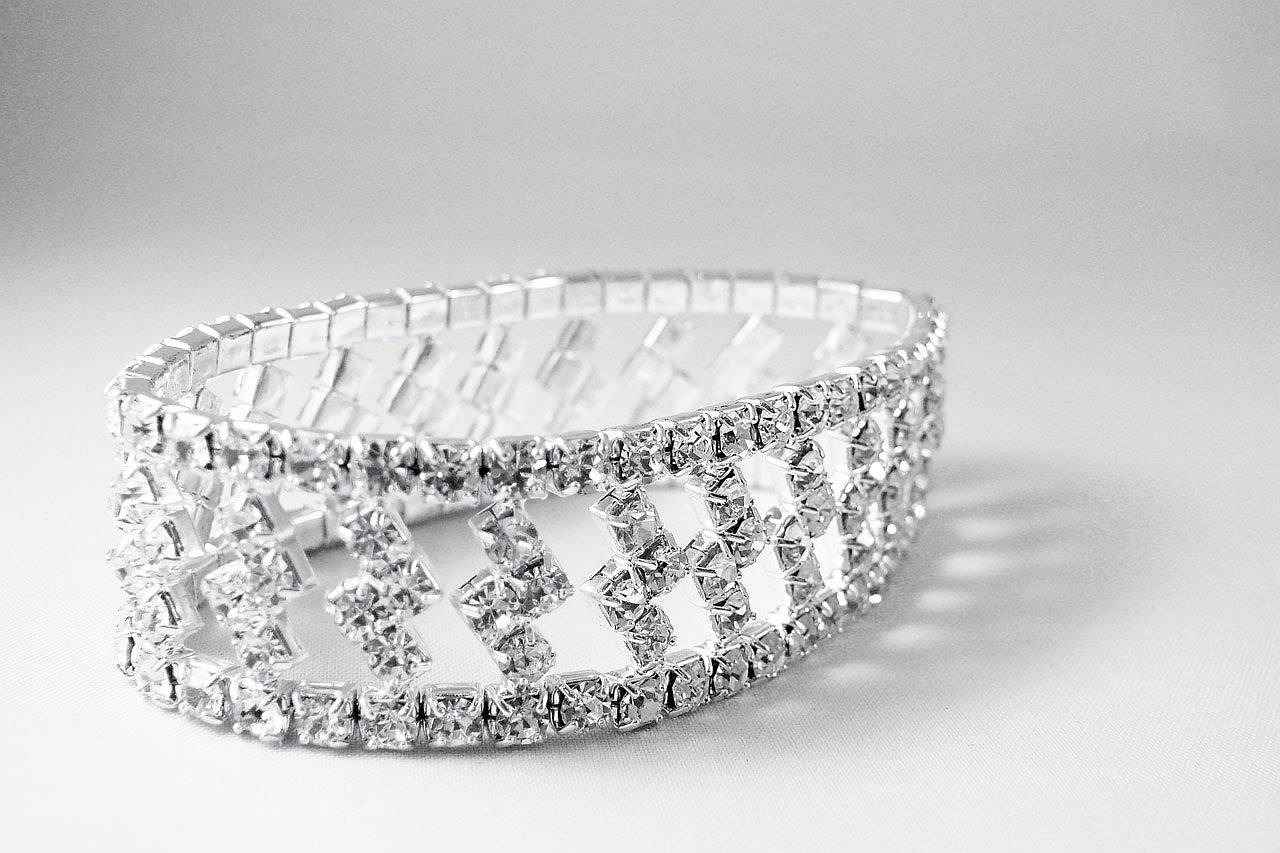
How to Choose the Right Cuff Bracelet
Choosing the right cuff bracelet is more than just a fashion decision; it’s a reflection of personal style, significance, and even emotional connection. With a myriad of options available, understanding how to select the perfect piece can be overwhelming. Below, we break down essential factors to consider when choosing a cuff bracelet that resonates with your individuality.
- Material: The material of a cuff bracelet can significantly influence its aesthetic and meaning. Common materials include:
- Metal: Gold, silver, and bronze are popular choices, often symbolizing strength and durability.
- Leather: Offers a more casual and earthy feel, often associated with creativity and freedom.
- Natural Stones: Gemstones and crystals can carry specific meanings, such as healing properties or emotional balance.
- Size: The right size is crucial for comfort and style. Cuff bracelets should fit snugly but not too tightly. Measure your wrist and consider trying on different sizes to find the perfect fit.
- Style: From minimalist designs to intricate patterns, the style of the cuff bracelet should align with your wardrobe and personal taste. Consider whether you prefer a classic look or something more contemporary.
Your personal style is a key component in selecting a cuff bracelet. A piece that resonates with your aesthetic will not only enhance your outfit but also boost your confidence. Consider the following:
- Everyday Wear: For daily use, opt for versatile designs that can be paired with various outfits.
- Statement Pieces: If you want to make a bold impression, look for unique designs that stand out.
- Symbolic Meaning: Choose bracelets that reflect your beliefs or significant life experiences, such as engraved messages or meaningful symbols.
Comfort is paramount when choosing any piece of jewelry, especially cuff bracelets that are worn for extended periods. Here are some tips to ensure your bracelet is comfortable:
- Try Before You Buy: Always try on the bracelet to assess how it feels on your wrist. Ensure it doesn’t pinch or slide off easily.
- Adjustable Options: Some cuff bracelets come with adjustable features, allowing for a customized fit that can be altered as needed.
- Consider Weight: Heavier bracelets may feel cumbersome over time, so select a weight that feels comfortable for your lifestyle.
Keeping up with current trends can also guide your selection process. Today, cuff bracelets are often seen in:
- Layering: Stacking multiple cuff bracelets of varying styles and materials is a popular trend, allowing for personalized expression.
- Mixed Media: Combining different materials, such as metal with leather or stones, creates an eclectic look that is highly sought after.
- Custom Designs: Many jewelers now offer custom designs, enabling you to create a piece that is uniquely yours.
In summary, selecting the perfect cuff bracelet involves careful consideration of materials, size, style, and personal comfort. By understanding these factors, you can find a piece that not only enhances your outfit but also resonates with your personal identity and values.
Materials and Their Meanings
Cuff bracelets are not merely fashion accessories; they are rich in symbolism and meaning, often reflecting the wearer’s personality and beliefs. The material used in a cuff bracelet plays a significant role in conveying these meanings. Different materials can evoke various emotions and connections, influencing how the wearer relates to the piece.
Understanding the significance of materials in cuff bracelets can enhance the overall experience of wearing them. Here are some common materials and their associated meanings:
- Metal: Cuff bracelets crafted from metals like gold, silver, or copper symbolize strength and durability. They often represent wealth, power, and resilience, making them popular choices for those seeking to project confidence.
- Natural Stones: Bracelets made from natural stones, such as turquoise, amethyst, or jade, convey a sense of tranquility and grounding. Each stone carries its unique properties, believed to promote healing, balance, and emotional well-being.
- Leather: Leather cuff bracelets are often associated with freedom and creativity. They can evoke a sense of adventure and individuality, appealing to those who embrace a more bohemian lifestyle.
- Wood: Wooden cuff bracelets symbolize a connection to nature and earthiness. They often reflect a person’s appreciation for the environment and can evoke feelings of warmth and comfort.
The choice of material can significantly influence how a wearer connects with their cuff bracelet. For example, someone who chooses a metal bracelet may be drawn to its strength and the statement it makes, while another person may prefer the calming energy of a stone bracelet. This personal connection can enhance the emotional value of the piece, making it more than just an accessory.
In many cultures, the materials used in cuff bracelets carry historical and spiritual significance. For instance:
- Gold and Silver: In various cultures, gold has been associated with the divine and is often used in religious ceremonies, while silver is seen as a protective metal.
- Gemstones: Different cultures assign specific meanings to gemstones. For example, in ancient cultures, turquoise was believed to offer protection and good fortune.
- Natural Materials: Indigenous cultures often use materials that are locally sourced, reflecting their connection to the land and their heritage.
When selecting a cuff bracelet, consider the following:
- Personal Meaning: Choose a material that resonates with you personally. Think about what qualities you want to embody.
- Comfort: Ensure that the material feels comfortable against your skin. Some people may prefer softer materials, while others may enjoy the weight of metal.
- Durability: Consider how often you plan to wear the bracelet. Some materials may require more maintenance than others.
In conclusion, the materials used in cuff bracelets are not just about aesthetics; they carry deep meanings and influences that can enhance the wearer’s connection to the piece. Whether it’s the strength of metal, the tranquility of natural stones, or the warmth of wood, each material offers a unique narrative that can resonate with individuals in different ways.
Finding the Perfect Fit
When it comes to accessorizing, the choice of a cuff bracelet can significantly enhance your style. However, is crucial for both comfort and aesthetic appeal. A cuff bracelet should embrace the wrist without being overly tight or too loose, ensuring that it remains securely in place while allowing for free movement. This balance between style and comfort is essential for everyday wear.
The fit of a cuff bracelet plays a vital role in its overall functionality and appearance. A bracelet that is too tight can cause discomfort and restrict blood flow, while one that is too loose may slip off or rotate around the wrist, diminishing its visual impact. Therefore, understanding how to find the right size is key to enjoying your jewelry.
To determine the ideal size for your cuff bracelet, follow these simple steps:
- Use a Measuring Tape: Wrap a flexible measuring tape around your wrist where you would typically wear a bracelet. Make sure it fits snugly but not too tight.
- Note the Measurement: Record the circumference in inches or centimeters. This will be your base measurement.
- Consider Bracelet Width: Wider cuffs may require a slightly larger size for comfort, while narrower designs can fit more snugly.
Different styles of cuff bracelets can influence how they fit on the wrist. Here are some popular designs:
- Open-Ended Cuffs: These are adjustable and can be gently squeezed or pulled apart to achieve a more personalized fit.
- Solid Cuffs: These typically come in fixed sizes, so ensuring you measure accurately is crucial.
- Stackable Cuffs: When wearing multiple cuffs, consider how they interact with each other. A slightly looser fit may be beneficial to accommodate layering.
Once you have selected a cuff bracelet, it’s essential to test its fit before committing to wear it for extended periods:
- Movement Test: Move your wrist up and down. The bracelet should stay in place without pinching or sliding off.
- Comfort Check: Wear the bracelet for a few minutes. If you feel any discomfort or pressure points, it may be too tight.
- Style Assessment: Look in the mirror to ensure the bracelet complements your overall outfit and personal style.
If you find that your cuff bracelet is not fitting as desired, there are a few adjustments you can make:
- For Open-Ended Cuffs: Gently squeeze the ends closer together or pull them apart to achieve a better fit.
- For Solid Cuffs: Consider visiting a jeweler for professional resizing if the bracelet is significantly off in size.
In conclusion, selecting the right cuff bracelet involves careful consideration of fit, style, and comfort. By following the steps outlined above, you can ensure that your cuff bracelet not only looks great but also feels great on your wrist.

Care and Maintenance of Cuff Bracelets
To preserve the beauty and integrity of cuff bracelets, proper care and maintenance are essential, ensuring they remain cherished pieces for years to come. Cuff bracelets are not only fashion statements but also carry sentimental value, often representing significant life events or personal milestones. By taking the time to care for these unique accessories, wearers can maintain their luster and significance.
Maintaining cuff bracelets is crucial for several reasons:
- Longevity: Regular care extends the life of the bracelet, allowing it to be enjoyed for generations.
- Preservation of Value: Well-maintained pieces retain their market value, making them worthy investments.
- Emotional Connection: Keeping these items in good condition helps preserve the memories and stories they represent.
Different materials require different cleaning methods. Here are some effective techniques:
- Metal Cuff Bracelets: Use a soft cloth to gently wipe away dirt and oils. For deeper cleaning, a mixture of mild soap and water can be used. Avoid harsh chemicals that can tarnish the metal.
- Gemstone-Studded Bracelets: For bracelets adorned with gemstones, ensure you use a gentle cleaner. Soak in soapy water for a few minutes, then rinse and dry with a soft cloth.
- Leather Cuff Bracelets: Use a damp cloth to clean leather. Avoid soaking, and apply a leather conditioner periodically to prevent cracking.
Proper storage is vital to prevent scratches and damage. Here are some tips:
- Use a Jewelry Box: Store cuff bracelets in a dedicated jewelry box with compartments to prevent them from tangling or scratching each other.
- Keep Away from Direct Sunlight: Prolonged exposure to sunlight can fade colors and damage materials. Store in a cool, dry place.
- Wrap in Soft Cloth: For added protection, wrap each bracelet in a soft cloth before placing it in storage.
Regularly inspect your cuff bracelets for any signs of wear or damage. Look for:
- Loose Stones: Ensure that gemstones are secure to avoid losing them.
- Scratches or Dents: Address any imperfections promptly to prevent further damage.
- Worn Clasps: If your cuff bracelet has a clasp, check its functionality to ensure it remains secure on your wrist.
If your cuff bracelet requires significant repairs, such as stone replacement or metalwork, consider consulting a professional jeweler. They can provide expert advice and services to restore your piece to its original beauty.
In summary, taking the time to care for cuff bracelets not only enhances their appearance but also preserves their sentimental value. By following these cleaning and storage tips, wearers can ensure their bracelets remain cherished accessories for years to come.
Cleaning Techniques for Cuff Bracelets
Maintaining the beauty and integrity of your cuff bracelets is essential for ensuring their longevity and visual appeal. Regular cleaning not only helps to restore their shine and luster, but it also prevents the buildup of dirt and oils that can tarnish their surface. The cleaning techniques you employ may vary significantly based on the materials used in your cuff bracelets.
Regular cleaning is crucial for several reasons:
- Preservation of Material: Different materials require specific care to prevent deterioration.
- Enhanced Appearance: A clean bracelet looks more appealing and can elevate your overall style.
- Health Considerations: Dirt and oils can accumulate, possibly causing skin irritation.
Understanding the material of your cuff bracelet is vital for choosing the right cleaning method. Here are some common materials and their respective cleaning techniques:
- Metal Cuff Bracelets: For bracelets made of silver, gold, or stainless steel, use a soft cloth to gently buff the surface. For deeper tarnishing, a specialized metal cleaner can be applied. Make sure to follow the instructions on the product to avoid damage.
- Leather Cuff Bracelets: Leather requires a different approach. Use a damp cloth to wipe the surface, followed by a leather conditioner to maintain its suppleness. Avoid soaking the leather, as excess moisture can lead to deterioration.
- Stone or Beaded Cuff Bracelets: If your cuff features natural stones or beads, use a soft brush to remove dust. For a deeper clean, a mild soap solution can be used, but ensure that the stones are not porous to avoid water damage.
Here’s a simple step-by-step guide to cleaning your cuff bracelets:
- Assess the Material: Identify the materials used in your cuff bracelet.
- Gather Supplies: Collect necessary cleaning supplies such as soft cloths, brushes, and appropriate cleaners.
- Initial Wipe Down: Use a dry cloth to remove surface dust and dirt.
- Apply Cleaner: For metal, apply a small amount of cleaner; for leather, use a conditioner; and for stones, a mild soap solution.
- Rinse and Dry: If applicable, rinse with clean water and dry thoroughly to prevent moisture damage.
- Store Properly: After cleaning, store your cuff bracelet in a soft pouch or jewelry box to protect it from scratches.
The frequency of cleaning depends on how often you wear your cuff bracelets. As a rule of thumb:
- Daily Wear: Clean every few weeks to maintain their shine.
- Occasional Wear: Clean before and after wearing to keep them in optimal condition.
By implementing these cleaning techniques and tips, you can ensure that your cuff bracelets remain stunning and cherished pieces of jewelry for years to come. Remember, proper care not only enhances their aesthetic appeal but also preserves the stories they carry.
Storage Tips for Longevity
Proper storage of cuff bracelets is essential for maintaining their beauty and integrity over time. These cherished accessories can be easily damaged if not stored correctly. Here are some effective tips to ensure your cuff bracelets remain in pristine condition:
- Use Individual Pouches: Each cuff bracelet should be stored in its own soft pouch. This helps to prevent scratches from contact with other jewelry. Look for pouches made of microfiber or soft cotton.
- Avoid Direct Sunlight: Store your cuff bracelets in a cool, dark place. Prolonged exposure to sunlight can cause fading or discoloration, especially for those made with natural stones or dyed materials.
- Keep Away from Humidity: Humidity can lead to tarnishing, especially for metal bracelets. Consider using a dehumidifier in your jewelry storage area or placing silica gel packets in your storage box to absorb moisture.
- Organize with a Jewelry Box: A dedicated jewelry box with compartments is ideal for keeping cuff bracelets organized. This prevents them from tangling with other pieces and reduces the risk of damage.
- Regularly Inspect Your Jewelry: Make it a habit to check your cuff bracelets for any signs of wear or damage. Early detection can save you from costly repairs or loss of your cherished items.
- Store Flat: Whenever possible, store cuff bracelets flat rather than stacking them. This helps maintain their shape and prevents bending or warping.
- Consider Temperature: Extreme temperatures can affect the integrity of materials. Store your cuff bracelets in a stable environment, avoiding areas like attics or basements where temperature fluctuations are common.
By following these storage tips, you can significantly extend the lifespan of your cuff bracelets. Remember, these pieces are not just accessories; they often hold sentimental value and represent important milestones in your life. Proper care ensures that they remain beautiful and meaningful for years to come.
In addition to storage, consider how you wear your cuff bracelets. Avoid wearing them during activities that may cause excessive wear, such as exercising or swimming. By combining proper storage with mindful usage, you can keep your cuff bracelets looking their best.
Ultimately, taking the time to care for your cuff bracelets will pay off in the long run, allowing you to enjoy these stunning pieces of jewelry for many years. Whether they are a part of your daily attire or reserved for special occasions, ensuring their longevity is well worth the effort.
Frequently Asked Questions
- What are cuff bracelets made of?
Cuff bracelets can be crafted from a variety of materials, including metals like gold, silver, and bronze, as well as natural materials such as wood, leather, and stones. Each material carries its own significance and style, allowing wearers to choose based on personal preference and meaning.
- How do I choose the right size for a cuff bracelet?
To find the perfect fit, measure your wrist just above the bone and choose a cuff that allows for a snug yet comfortable fit. Remember, the bracelet should not be too tight or too loose; it should rest comfortably on your wrist for everyday wear.
- Can cuff bracelets be worn for special occasions?
Absolutely! Cuff bracelets are versatile enough to be worn for various occasions, from casual outings to formal events. They can add a touch of elegance or a pop of personality, making them a great choice for celebrating milestones like weddings or graduations.
- How do I care for my cuff bracelet?
Proper care is essential to maintain your cuff bracelet’s beauty. Regularly clean it with a soft cloth and store it in a safe place to avoid scratches. Depending on the material, you might need specific cleaning solutions, so always check the care instructions!
- Are cuff bracelets a good gift?
Yes! Cuff bracelets make thoughtful gifts for loved ones, especially when personalized with engravings or symbols that hold special meaning. They can represent love, friendship, or significant life events, making them cherished keepsakes.
